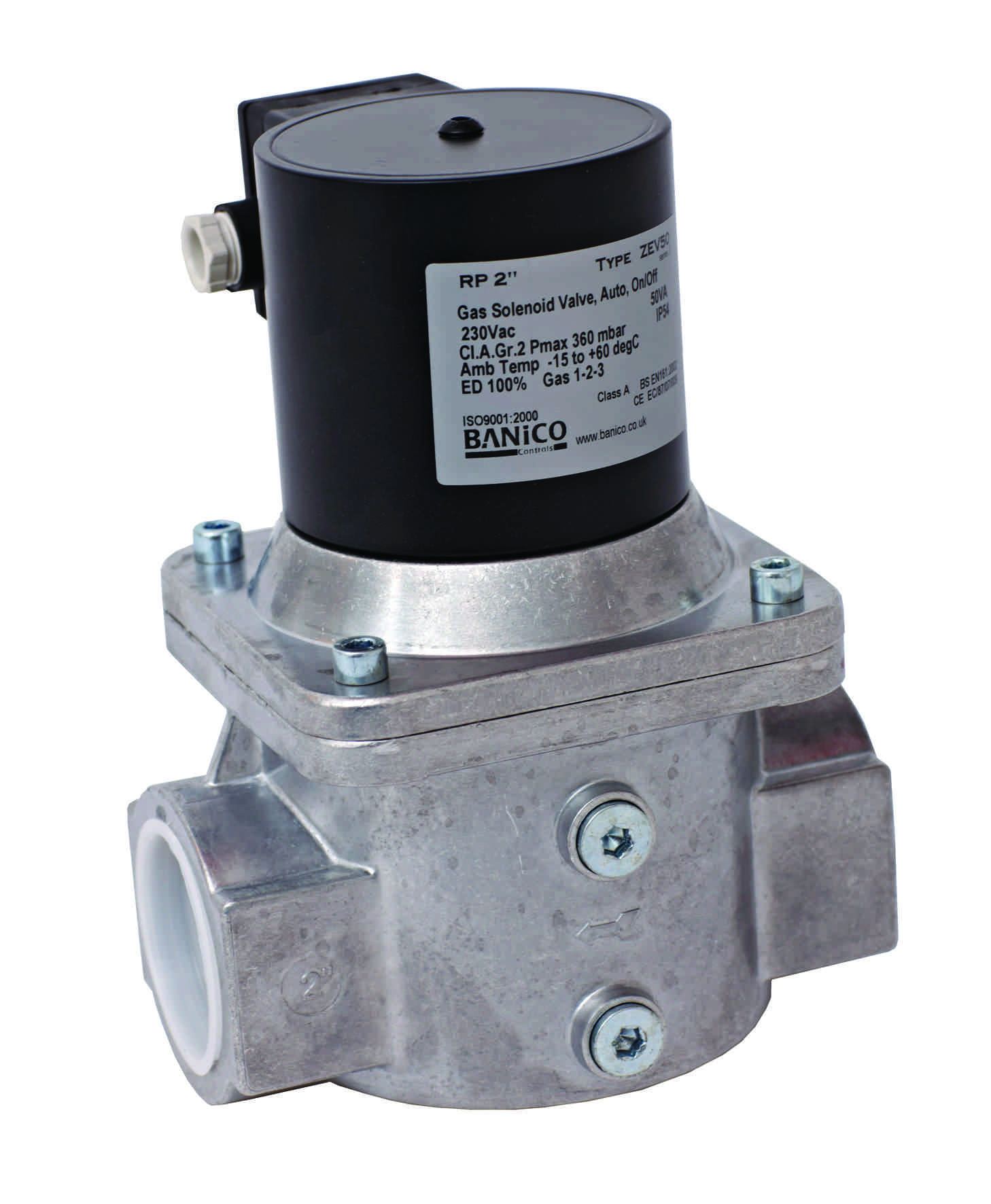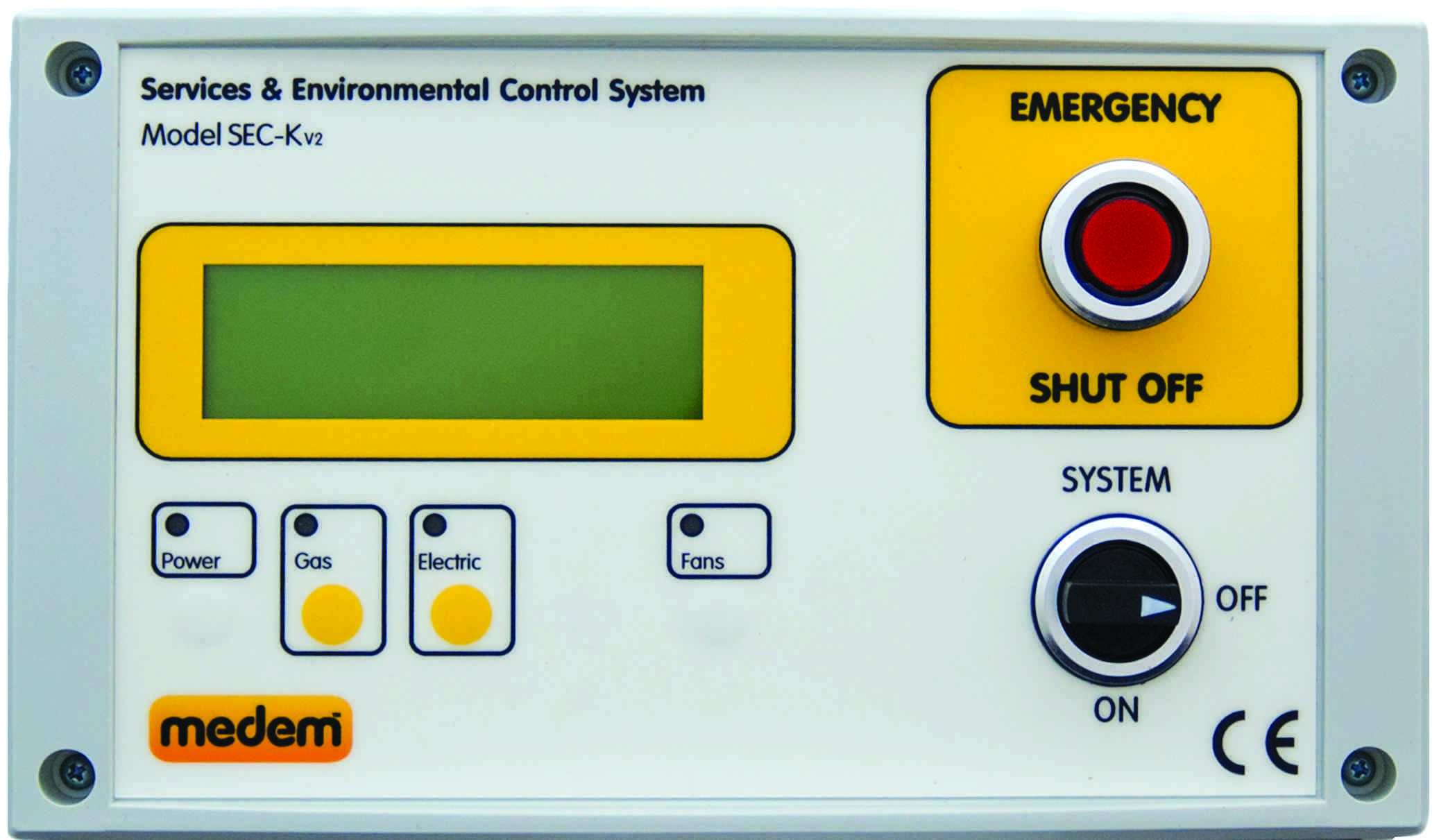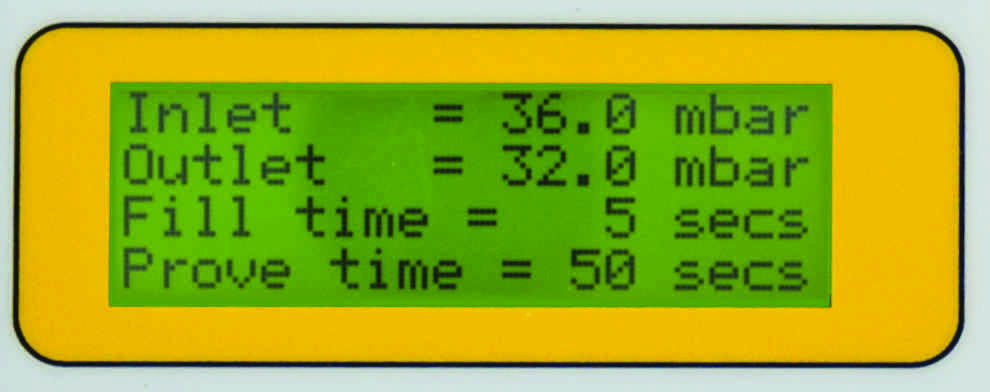
A commercial kitchen is described in BS 61731 as any kitchen other than a domestic or guesthouse kitchen. However, much of the reported research is focused on domestic applications. This article will draw on a broad set of references, many of which consider health effects of airborne contaminants that are hazardous to humans – whether in a commercial or domestic setting.
The case for adequate ventilation when cooking food
Research undertaken by Dennekamp et al2 concluded that ‘cooking in a poorly ventilated kitchen may give rise to potentially toxic concentrations of numbers of particles. Very high concentrations of oxides of nitrogen may also be generated by gas cooking and, with no extraction and poor ventilation, may reach concentrations at which adverse health effects may be expected’.
Cooking appliances and the process of cooking itself can produce numerous pollutants.3 For instance, frying will produce acrolein (toxic and a strong irritant for the skin, eyes, and nose) and polycyclic aromatic hydrocarbons (numerous associations with adverse health), and large amounts of ultrafine (<0.1 μm) particles. Gas burners will generate nitrogen dioxide (NO2), carbon monoxide (CO), particulate matter (PM), and formaldehyde (with its well documented health impacts).
The UK’s Committee on the Medical Effects of Air Pollutants (COMEAP) has recently reviewed4 the current body of research on the effect of NO2 on health. It concluded that, although in many cases the adverse health effects may be associated with other contaminants that coexist with NO2 in the environment (such as small particles PM10 and PM2.5), NO2 is responsible for detrimental health impacts. Both short-term and extended exposure were determined to impact on health, and the review cited a report by Faustini5, which concluded that the magnitude of the effect of long-term NO2 exposure on mortality is at least as important as that of PM2.5.
The use of gas for cooking requires an appropriate supply of air for complete combustion – otherwise high levels of CO will be produced. An extensive review6 of the scientific knowledge on CO, including the effect on human health, was undertaken by Penney et al for the World Health Organisation (WHO) in 2010. The report is thought-provoking, not only in terms of the multitude of cited research that relates health problems to both acute (short-term) and chronic (repeated, continuous) CO exposure, but also in the variety of potential disorders that can result from this.
For example, at relatively low CO levels there is evidence of increased incidences of low birth weight, congenital defects, infant and adult mortality, cardiovascular hospital admissions, congestive heart failure, stroke, asthma, tuberculosis and pneumonia. It is widely understood that CO poisoning can be fatal, though it is probably less well understood that long-term low exposure is likely to lead to health issues.
It appears that long-term exposures to lower levels of CO may have wider-ranging implications for human health than do acute CO exposures. The research has linked it to physical symptoms, sensory-motor changes, cognitive memory deficits, emotional-psychiatric alterations, cardiac events and low birth weight. And the identified cases of CO poisoning may well be significantly under-reported since it concludes that ‘it is established that many cases of carbon monoxide toxicity are misdiagnosed because the symptoms mimic other health problems’.
The UK Health and Safety Executive (HSE) document EH407, updated in 2011, limits the eight-hour weighted average for workplace exposure to 30ppm, and 200ppm for 15 minutes. The WHO recommendation, updated in 2009, sets the limit8 at 9mg·m–3 (7ppm) over eight hours, and 100mg·m–3 (81ppm) for 15 minutes.
Ensuring appropriate ventilation
In a commercial kitchen, air change is normally supplied by a mechanical ventilation system. This is most often by means of an extract canopy, situated above the appliances to remove the by-products of the cooking process. Sufficient outdoor air must be provided through supply fans, or by natural ventilation, in order to replace the extracted air. The Institution of Gas Engineers and Managers (IGEM) document UP199 requires that where air is supplied by mechanical means, it should be a maximum of 85% of the total extracted volume.

Figure 1: Automatic gas isolation valve
The remaining 15% is supplied from the areas adjacent to the kitchen, so maintaining a positive flow of air into the cooking area. BS 6173 more directly requires that sufficient air is provided for both combustion and the removal of combustion products, steam and associated contaminants. The British Standard also outlines the need for an interlock that will isolate the gas supply, in the event that the mechanical ventilation system fails.
Most of the cooking appliances would be under a canopy and designed to operate without a flue (known as ‘Type A’ under the European scheme for classifying gas appliances, CEN CR 174910). Others, such as some types of convection ovens and deep fat fryers, can require connection to a dedicated flue (‘Type B’).
The UK Gas Safety (installation and use) Regulations allow for both types of equipment to be installed under a canopy, deeming it a ‘power operated flue’, requiring an interlock that will shut off the gas supply to the appliances in the event of an air movement failure. Therefore, an extract canopy will be incorporated in the majority of commercial kitchens – particularly those utilising gas – regardless of the type of appliances.
Interlocking methods
For interlocking the gas supply with mechanical ventilation, an automatic isolation valve (AIV – as in Figure 1) that conforms to BS EN 16111 will need to be incorporated.
Such a valve would be linked through a control panel (such as that shown in Figure 2) that will normally be sited, for ease of use, next to any fan speed controllers. The panel should be fitted with an on/off switch or key and an emergency stop button, and an LCD display can be included to provide a simple – and contextualised – set of user instructions or status (as, for example, shown in the detail of the display in Figure 3).

Figure 2: An integrated ventilation interlock, leak detection, CO2 monitoring and gas safety system
The fan operation is usually measured either by an airflow pressure differential switch or electrical current monitoring. The latter is an acceptable method provided that, where belt drive fans are used, the belt system has slippage and failure monitoring incorporated. Overrides are not allowed1,9 on interlock devices; otherwise cooking could take place in the absence of effective ventilation, so risking the health and safety of occupants.
Carbon dioxide monitoring as an air quality proxy
Measuring CO2 levels in a kitchen as an air quality indicator is a useful addition to an interlock system. When installed correctly, this can give an early indication of deteriorating air quality that may be caused, for example, when extract canopy grease filters have not been correctly cleaned. CO2 detector heads must conform to BS EN 50543,12 and only sensors specifically designed for commercial and light industrial use should be employed in a commercial kitchen.
However, the monitoring of CO2 levels should not be relied upon to act as the signal for a primary safety device or interlock, unless only one Type A appliance is installed. For a short while, the now withdrawn Gas Safe Register TB140 guidance (superseded by IGEM UP 19) allowed CO2 detectors to act as a secondary interlock in the event of a fan failure, but this is no longer an acceptable method.
Any safety device must failsafe so that, in the event of its failure, the gas will be isolated. A CO2 detector head cannot be failsafe, since the device could be rendered ineffective by grease. Even with a filter-protected detector head, it is still not possible to treat it as failsafe, as it relies on the filter being changed on a regular basis.
A ventilation interlock system with any connected CO2 sensors should provide a ‘pre-alarm’ at 2,800ppm. If the CO2 concentration increases, an interlock incorporating an LCD display should indicate to the user that the ventilation level needs to be increased, and that the grease filters may require attention. At 5,000ppm, the interlock must9 isolate the gas supply to the appliances.
Solid fuel use and carbon monoxide monitoring
As a response to the increasing use of wood and charcoal ovens in restaurants, the HSE has released catering information sheet 26: Preventing exposure to carbon monoxide from use of solid fuel appliances in commercial kitchens. This suggests the use of CO sensors where a solid fuel cooker is installed. It also states that the sensor should be interlocked with the canopy fan fitted above the oven, so that the canopy remains on when the CO concentration is over a prescribed maximum, even when cooking has ceased. Such solid fuel installations will also fall under the UK Control of Substances Hazardous to Health (COSHH)13 Regulations and the Building Regulations.
Gas safety
The supply of gas into the kitchen needs to be controlled and monitored to ensure maximum safety. IGEM UP1A14 points out that closing the AIV can result in the complete loss of pressure on the downstream side of the AIV. This would then require a tightness test, and possibly purging (on large installations), before cooking can recommence. This loss of pressure can happen even with flame safety devices fitted on appliances, because they will allow gas to burn for up to 10 seconds following the closure of the AIV as the pressure decreases, resulting in a loss of pressure downstream of the AIV. Pressure can even be lost downstream overnight when the AIV is closed, because of allowable leakage.

Figure 3: An LCD display ensures not only that the kitchen operative has simple contextualised instructions but also displays engineering information to simplify installation and diagnosing connected services
The interlock can be integrated together with a gas safety, monitoring, and gas-proving system. Gas pressure-proving as an integrated part of the ventilation interlock provides a means of ensuring that no gas leaks are present when such a system is turned on. It also overcomes the issue of low pressure downstream of the AIV, as described above.
A recently developed failsafe system tests the full function of the AIV each time the system is operated to ensure that the panel does not receive erroneous information, leading to an uncontrolled situation, such as an undetected gas leak. This is available on systems that continuously measure the gas pressure on both sides of the AIV – even before the AIV is opened by the panel – to carry out the pressure-proving test on the gas supply to the appliances.
Conclusion
The commercial production kitchen could be a high-risk place to work in. Yet, in the UK, incidences that fall under Reporting of Injuries, Diseases and Dangerous Occurrences Regulations (RIDDOR) related to carbon monoxide are very low.15 This reflects well on the designers, maintainers and operators, and is underpinned by the appropriate application of properly controlled gas supplies, cooking appliances and associated ventilation systems.
However, this is not a signal for complacency, as there is a body of evidence that chronic exposure to relatively low levels of contaminants can have significant effects on long-term health. Properly designed and controlled integrated ventilation systems are likely to become increasingly important.
© Chris Dearden and Tim Dwyer, 2016
References:
1 BS 6173 Specification for installation and maintenance of gas-fired catering appliances for use in all types of catering establishments (2nd and 3rd family gases), BSI, 2009.
2 Dennekamp, M et al, Ultrafine particles and nitrogen oxides generated by gas and electric cooking, Occupational and Environmental Medicine, August 2001.
3 Take Care in the Kitchen: Avoiding Cooking-Related Pollutants, Environmental Health Perspectives, accessed 27 December 2015.
4 Statement on the evidence for the effects of nitrogen dioxide on health, accessed 27 December 2015.
5 Faustini, A et al Nitrogen dioxide and mortality: review and meta-analysis of long-term studies, European Respiratory Journal 44, 2014.
6 Penney, D et al, WHO Guidelines for Indoor Air Quality: Selected Pollutants, accessed 27 December 2015.
7 EH40/2005 Workplace exposure limits – Second edition 2011, HSE.
8 Selected pollutants: WHO guideline for indoor air quality, World Health Organization, 2010.
9 IGEM/UP/19 with amendment January 2015, Design and application of interlock devices and associated systems used with gas appliance installations in commercial catering establishments’, IGEM, 2015.
10 PD CEN/TR 1749:2014 European scheme for the classification of gas appliances according to the method of evacuation of the combustion products, BSI, 2014.
11 BS EN 161:2011+A3:2013 Automatic shut-off valves for gas burners and gas appliances, BSI, 2013.
12 BS EN 50543:2011 Electronic portable and transportable apparatus designed to detect and measure carbon dioxide and/or carbon monoxide in indoor ambient air. Requirements and test methods, BSI, 2011.
13 Control of Substances Hazardous to Health 2002
14 IGE/UP/1A Edition 2 Strength testing, tightness testing and direct purging of small low pressure industrial and commercial Natural Gas installations, IGEM.
15 Incidents reported in Great Britain relating to the supply and use of flammable gas, HSE, October 2015, accessed 27 December 2015.
